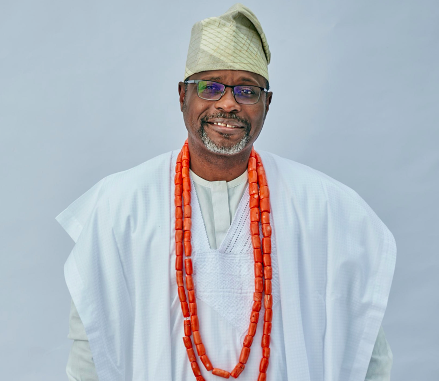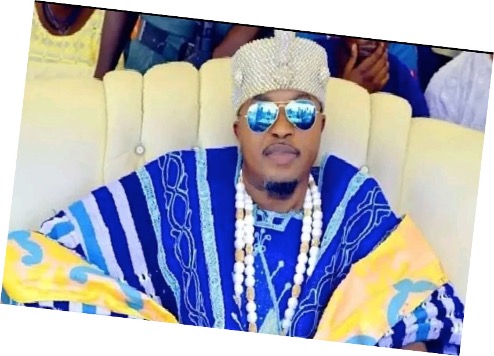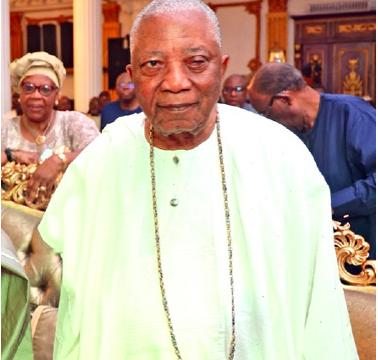Beneath the veil of the diverse creative expressions in the Life In My City Art Festival’s Lagos Region exhibition, lurk profound epiphanies, personal struggles, societal commentary, and a deep desire for change. Okechukwu Uwaezuoke reports
Epiphany moments – those sneaky little bursts of insight that sometimes make one wonder why they didn’t come sooner – typically pop up unannounced. And in unlikely places to boot! Take the case of Oluwashina Sulaimon, one of the 62 talented artists who showcased their works at the Life In My City Art Festival’s Lagos Region exhibition, which held from August 1 to August 8 at the Thought Pyramid Art Centre in Ikoyi. One such moment arrived for him on a rainy day. Perhaps, the Muses might have conspired to gift him with inspiration. It was at a bus stop in Ibadan, of all places. What more apt illustration could there have been that inspiration strikes when and where it is least expected?
Stuck amidst other commuters in the downpour, the 27-year-old techie with a passion for art watched in dismay as the transport fare took an unceremonious leap, vaulting from ₦200 to ₦400 in the blink of an eye – a price hike that was as unwelcome as an uninvited guest at a family dinner. This eye-opening experience would prove to be a turning point, sparking a profound realisation. As he recalls, “It was like a light bulb went off in my head. We love to shout for change, but how often do we choose what is right, even when no one is watching?”
Talk about a paradigm shift! Sulaimon’s transformation was nothing short of remarkable. He recalled how he used to be part of the choir singing the blame game – government, religion, and anything else but himself. But just then, the hypocrisy of it all became obvious through all the cracks. The people point fingers at the system, yet their own hands are busy tightening the noose. Then, a candid comment from someone stuck in the same predicament struck a chord: “We’ll blame the government for this, but it’s you people who just hiked the price.”
As he pondered the festival’s theme, Can We Breathe?, it began to assume a haunting significance. “It’s not just a question,” he says with a tinge of irony, “it’s a desperate cry – the voices of those suffocating under the weight of broken promises, choking on their own complicity.”
Similarly, this theme, which instantly calls to mind the tragic fate of Eric Garner and George Floyd, two African Americans whose earthly lives were violently snuffed out by the police, resonated with the experiences of his co-exhibitors at the exhibition. This particular exhibition, by the way, was just one of 16 regional exhibitions planned to take place across the country this year. These regional exhibitions, which typically take place at different times and venues, build up to the grand finale in Enugu, where the top 100 will be featured in late October. Ten of these hopeful top 100 have already been selected from this Lagos Region exhibition.
Predictably, yet sometimes refreshingly, most of the artists kept their sights on the theme in their submissions. Among them is Victoria Somawine, who as a first child and daughter of an Igbo family, finds art to be an outlet for her emotions. She, as the only one who chose art as a career path, is continually at odds with her parents, who wanted her to pursue a medical career. “I’m confronted with pressure from society and family,” she says. “Being told what to do and how to act, as a representative of a social unit. My every move being watched. I feel like I’m walking on eggshells, trying to please everyone, but never really pleasing myself. ‘Be a good example, your siblings are watching,’ they say.”
Similarly, for Rebecca Obiageli Madu, another participant at the weeklong exhibition, the theme hits a little too close to home – a primal cry that reverberates through her ancestral roots, her politics, and her spirituality. Having navigated solitude since age 17, she finds solace in the sea’s vastness and has learned to shapeshift to survive life’s challenges. This experience informs her deep connection to the theme, which she feels resonating within her bones. “Breath is sacred,” she says, her words a reflection of her own journey. “It is the first permission to exist. But in many spaces, especially as Black women and artists from the grassroots, our breath has been interrupted by systems, silence, and survival. This festival theme resonates deeply because my art is my exhale. My canvas is where I reclaim breath, where I speak what the world tried to silence…”
All participants in this youth-focused art competition, which now for the first time welcomes foreign artists who have been residing in Nigeria for at least five years, had in response to the call for entries earlier this year, which ended on May 31, paid a non-refundable token fee of N5000 while submitting their works.
On its 18th edition, the competition, more popularly known as LIMCAF, is offering a dazzling array of over 60 million naira in prizes for the contestants, all of whom are below 35 years. A closer look at the prize portfolio reveals that the grand prize, now rechristened as the Elder Kalu Young Artist of the Year Prize, has been substantially upped to the naira equivalent of USD 2,000, honouring the indelible legacy of the late Elder Kalu Uke Kalu, a stalwart of the annual festival. Complementing this are an array of category prizes as well as bespoke prizes, each designed to recognise and reward exceptional talent. Notable examples include the Chinelo Chime Prize for Best in Photography, which stands out with a prize of N1 million, and category prizes in painting, sculpture, drawing, and ceramics, each worth N500,000.
As the artists’ voices converge in a collective cry for breath, freedom, and self-expression, the festival stands as a beacon of the transformative power of art to challenge, inspire, and uplift.

















Leave a comment